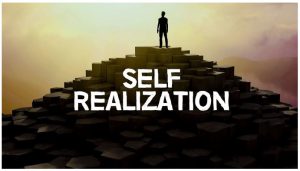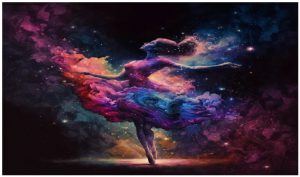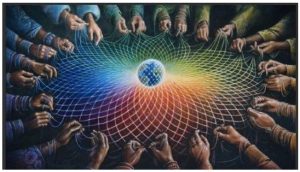THE ESSENCE OF RELATIONSHIPS IN THE JOURNEY OF SELF-REALIZATION

Within the vast and intricate tapestry of existence, a poignant theme emerges—a thread that delicately weaves through the fabric of our lives. Here, I embark on a journey into the practicality of this profound concept, illuminating how relationships, like luminescent gateways, unfold the path to self-realization and a harmonious oneness with the universe. As we delve into the nuanced intricacies of our connections with others, we unveil the transformative power held within the embrace of relationships, transcending mere interpersonal dynamics to become a transcendent conduit to the very essence of our being.
Relationships as Natural Laws: A Cosmic Dance of Forces
At the heart of our quest to comprehend the intricacies of the universe lies the profound recognition that the fundamental principles governing the cosmos are not mere abstract laws but dynamic relationships between archetypal forces. This perspective invites us to explore the cosmos as a grand tapestry woven with the threads of interconnectedness, where everything, from the celestial bodies to the smallest particles, engages in a cosmic dance governed by these relationships.
The classical laws of physics, such as gravity formulated by Sir Isaac Newton, provide an insightful starting point. Gravity, the force that pulls objects toward one another, is not a solitary dictator but a participant in a larger relational scheme. Planets orbit stars, moons encircle planets, and galaxies form vast cosmic communities—all orchestrated by the interplay of gravitational forces. This dance of celestial bodies illustrates that the essence of gravity lies not just in the force itself but in the relationships it establishes on a cosmic scale.

Extending this concept to the microscopic realm, we encounter the domain of organic chemistry—a discipline that unravels the intricate relationships between atoms and molecules. The chemical bonds that bind these fundamental building blocks of matter are not arbitrary; they follow specific patterns and rules. The way atoms bond and interact forms the basis of life-sustaining relationships, creating the structural and functional diversity observed in the living world.
Venturing further, we recognize that even the abstract laws governing thermodynamics and electromagnetism are, at their core, expressions of relationships between energy, matter, and forces. Thermodynamics, for instance, reveals the dynamic exchanges of energy within a system and its surroundings. The laws dictating the behavior of electricity and magnetism highlight the interconnected dance of charged particles and magnetic fields.
In essence, the universe, as revealed by these natural laws, unfolds as a vast web of relationships—each force, each principle, intricately connected to others in a cosmic ballet. The realization that the laws governing the universe are not rigid commandments but dynamic relationships prompts a shift in our perspective. Instead of perceiving the universe as a mechanical clockwork with isolated components, we begin to see it as a living, breathing organism where relationships are the lifeblood.
The essay posits that understanding these relationships is tantamount to grasping the very fabric of existence. It suggests that beneath the surface of scientific laws lies a profound interrelatedness that defines the nature of reality itself. This perspective challenges us to move beyond a reductionist view of the universe and embrace a holistic understanding where relationships, rather than isolated laws, take center stage.
As we delve into the cosmic dance of forces, we find that the essence of existence is relational. It is a continuous interplay, an eternal conversation between the various elements that make up the universe. This recognition invites contemplation on the nature of reality and our place within this grand tapestry of relationships. In the intricate choreography of the cosmos, understanding relationships becomes a gateway to unlocking the secrets of existence and appreciating the interconnected beauty of the universe.
Unity vs. Ego Consciousness: Navigating the Cosmic Duality
In the exploration of consciousness, a profound dichotomy arises when contrasting unity consciousness with ego consciousness. This duality paints a vivid picture of the human experience, offering insights into the underlying motivations that shape our perceptions and actions. Rooted in primal instincts, ego consciousness and unity consciousness represent two divergent approaches to life—one characterized by self-preservation, and the other by interconnected harmony.
At the heart of ego consciousness lies a fundamental impulse for survival. It is an evolutionary mechanism that served our ancestors well in the face of imminent threats. The ego, akin to a vigilant sentinel, thrives on a paradigm of taking and keeping. In the egoic worldview, life is perceived as a perpetual struggle, a survival game where one must accumulate resources, protect oneself, and secure one’s position in a seemingly hostile world.

This survival-oriented mindset is deeply ingrained in the fabric of ego consciousness. It manifests in the constant quest for self-preservation, often at the expense of others. The ego, driven by fear and the anticipation of scarcity, adopts a posture of taking—taking resources, taking control, and taking security. Moreover, it clings to what it accumulates, fostering a culture of keeping, withholding, and accumulating possessions, power, and influence as a means of fortifying its existence.
In stark contrast, unity consciousness embodies a more expansive and interconnected worldview. It is a paradigm rooted in the recognition that life’s true essence is found in the reciprocal flow of energy—an intricate dance of giving and receiving. In the tapestry of unity consciousness, giving and receiving are not isolated actions but harmoniously intertwined, creating a seamless exchange that sustains the interconnected web of existence.
Living, as defined by unity consciousness, transcends mere survival. It is an expression of being in flow with the rhythms of life, participating in the cosmic dance of creation and dissolution. The emphasis shifts from accumulating and hoarding to a recognition of the abundance that arises from giving. Unity consciousness invites us to partake in the symphony of existence, where each note played—a gesture of giving—resonates through the entire cosmic orchestra, enriching the collective experience.
The reciprocity embedded in unity consciousness extends beyond the individual to encompass relationships with others, the environment, and the cosmos at large. It heralds a way of being that
acknowledges the interconnectedness of all life forms. In this paradigm, one’s well-being is intricately linked to the well-being of the whole—a stark departure from the egoic mindset that fosters a sense of separateness and competition.
Understanding this cosmic duality provides profound insights into the human experience. It unveils the motivations guiding our actions and the lenses through which we perceive the world. While ego consciousness perpetuates a narrative of fear, scarcity, and individual survival, unity consciousness invites us to embrace a narrative of love, abundance, and shared existence.
Navigating this cosmic duality becomes a journey of self-discovery and transformation. It invites individuals to transcend the limitations of egoic thinking, recognizing the illusion of separateness, and embracing a more expansive, interconnected understanding of reality. As we navigate this dichotomy, we are presented with choices—choices that shape not only our personal experiences but also contribute to the collective evolution toward a more harmonious and unified existence.
Love as the Key to Oneness: Illuminating the Cosmic Tapestry
In the cosmic tapestry of existence, the transformative power of love emerges as a central theme, weaving its way through the intricate threads of relationships. This narrative contends that love, when embraced as the guiding force in our interactions, becomes the key to unlocking the doors to oneness—a state where the act of giving is inseparable from receiving, and all needs find fulfillment in the harmonious dance of interconnected existence.
At its essence, love is portrayed not merely as an emotion but as a profound force, a unifying energy that transcends the boundaries of individual experiences. When relationships are approached with love, the essay suggests that a remarkable alchemy takes place—needs are met, joy is shared, and the participants become integral players in the cosmic symphony of oneness.
The core premise revolves around the idea that love operates as a bridge to oneness. In the context of relationships, whether with other humans, nature, or the cosmos, the selfless act of giving is not a one-sided endeavor. Instead, it becomes a reciprocal flow of energy, mirroring the cosmic dance of creation and dissolution. In this paradigm, love is the language through which the universe communicates, fostering a profound interconnectedness that extends beyond the individual self.
Drawing parallels with the laws of nature, the essay posits that, similar to a star radiating light to fulfill its purpose, humans find true fulfillment in sharing love. The analogy is poignant—a star, to be recognized as such, must emit light. Similarly, to recognize our true essence and purpose, the essay suggests that humans must radiate love. Love becomes the intrinsic quality that defines and fulfills our existence, echoing the age-old adage that giving is receiving.
Furthermore, the reciprocity embedded in the act of love aligns with the fundamental principles governing the cosmos. In the cosmic dance of oneness, giving and receiving are not isolated events but seamlessly interwoven. This interdependence mirrors the laws of nature, where every action has a reciprocal reaction, creating a delicate balance that sustains the cosmic order.
As individuals embark on the journey of embracing love as the key to oneness, they are invited to transcend the limitations of egoic thinking. Love, in this narrative, is not confined to personal relationships but extends to encompass a broader understanding of unity—a unity that embraces all of existence. By cultivating a spirit of love, individuals become active participants in the cosmic unfolding, contributing to the creation of a more harmonious and interconnected reality.
Practicing Oneness: The Alchemy of Transformative Relationships
At the heart of spiritual exploration lies the practical application of oneness, a transformative journey from the survival-centric paradigm of ego consciousness to the expansive realm of living, giving, and receiving. This essay advocates for a profound yet accessible practice: the intentional cultivation of loving relationships in all facets of life. Through this practice, not only is the dormant Kundalini energy activated, serving as the essence of love within, but it also becomes a potent conduit for embodying the profound truths of oneness.

The shift from survival to living is portrayed as a pivotal transformation—one that transcends mere existence to embrace the fullness of life. In the egoic consciousness rooted in survival instincts, the predominant focus revolves around taking and keeping, driven by an innate urge for self-preservation. The contrast with the essence of living, as suggested in the essay, is found in the reciprocal flow of energy inherent in giving and receiving.
The essay posits that life’s true essence is discovered in the harmonious dance of giving and receiving. This reciprocity mirrors the laws of nature, where every action begets an equal reaction, creating a delicate equilibrium. In the context of spiritual growth, the practice of making all relationships loving becomes a powerful catalyst for this transformation.
The practice is not merely an intellectual endeavor but an embodied alchemy that taps into the dormant Kundalini energy—the heart-centered, green ray energy associated with love. By activating this energy through the intentional act of making relationships loving, individuals embark on a journey of spiritual acceleration. The Kundalini, likened to the engine of love, is set into motion, propelling the practitioner into deeper realms of oneness.
Furthermore, the text emphasizes the simplicity of this practice. It transcends the need for elaborate yogic rituals or complex meditation techniques. Instead, it beckons individuals to infuse love into their everyday interactions—with family, friends, colleagues, and even oneself. In this simplicity lies its potency, making the practice accessible to all, irrespective of their spiritual background or level of expertise.
The essay suggests that this intentional practice not only accelerates spiritual growth but also serves as a conduit for embodying the truths of oneness. As individuals consistently engage in loving relationships, the narrative unfolds—an embodied understanding of oneness emerges naturally. It’s not
just an intellectual grasp of the concept but a lived experience, etched into the very fabric of one’s being.
Service to Others: Illuminating the Path to Self-Realization
In the expansive realm of spiritual exploration, a pivotal facet emerges—the profound role of service to others as an illuminating path to self-realization. Drawing inspiration from teachings resonant with the wisdom of figures like Jesus, the essay delves into the reciprocity woven into the fabric of giving and receiving. It accentuates that the joy derived from selfless service and the cultivation of loving relationships serves as an intrinsic key to unlocking the profound awareness of oneness.
At the core of this exploration lies a recognition that the act of serving others is not merely a benevolent gesture but a transformative journey with reciprocal implications. The reciprocity is not transactional; instead, it’s an energetic exchange that transcends the material realm. The essay posits that the joy derived from serving others acts as a conduit—an energetic bridge that connects individuals to the very essence of oneness.
The narrative draws parallels with the teachings attributed to Jesus, particularly the directive to his disciples to go and preach the good news, heal the sick, raise the dead, and cleanse the lepers. This seemingly altruistic call to service, the essay suggests, was a strategic move to instill in the disciples the embodiment of the transformative truths Jesus imparted. By engaging in acts of service, the disciples not only spread the message of oneness but also activated the awareness of oneness within themselves.
The reciprocity inherent in giving and receiving is explored as a fundamental principle—one that mirrors the very essence of oneness. When individuals engage in selfless service, they create a harmonious exchange of energy. The act of giving becomes synonymous with receiving, and the joy derived from serving others becomes a tangible manifestation of the reciprocal nature of love.
Furthermore, the essay contends that this reciprocal joy is intrinsic to unlocking the awareness of oneness. It serves as a bridge that transcends the egoic consciousness rooted in survival instincts. In the act of service, individuals move beyond the limiting narrative of “what can I take to preserve myself” to a state of “how can I give to uplift others.” This shift is transformative, aligning individuals with the very fabric of oneness.
In essence, the narrative underscores that service to others is not a mere moral imperative but a dynamic force that propels individuals along the path of self-realization. The joy derived from fostering loving relationships and engaging in acts of service serves as a key—a radiant beacon guiding individuals towards the profound awareness of oneness. It’s a transformative journey where the giver and the receiver become interconnected threads in the tapestry of universal unity.
Service to others emerges as a profound and transformative path to self-realization. By engaging in acts of service and fostering loving relationships, individuals not only spread the essence of oneness but also activate the awareness of oneness within themselves. The reciprocity inherent in giving and receiving becomes a dynamic force, and the joy derived from selfless service serves as an intrinsic key to unlocking the profound truths of oneness.

In conclusion, I have tried to encapsulate the profound interplay between relationships and self-realization. I appeal to individuals to transcend ego-consciousness, embrace love in all interactions, and recognize the intrinsic unity woven into the very fabric of existence. Through the conscious practice of making all relationships loving, one embarks on a transformative odyssey toward oneness—a journey that not only illuminates personal growth but contributes to the collective elevation of human consciousness.
 Dr K. Jayanth Murali is a retired IPS officer and a Life Coach. He is the author of four books, including the best-selling 42 Mondays. He is passionate about painting, farming, and long-distance running. He has run several marathons and has two entries in the Asian book of Records in full and half marathon categories. He lives with his family in Chennai, India. When he is not running, he is either writing or chilling with a book.
Dr K. Jayanth Murali is a retired IPS officer and a Life Coach. He is the author of four books, including the best-selling 42 Mondays. He is passionate about painting, farming, and long-distance running. He has run several marathons and has two entries in the Asian book of Records in full and half marathon categories. He lives with his family in Chennai, India. When he is not running, he is either writing or chilling with a book.
